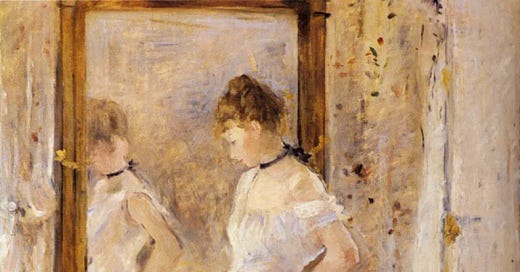Berthe Morisot (1841–1895), a French painter and founding member of the Impressionist movement. Though she exhibited alongside Monet and Degas, her work was often dismissed as delicate or domestic. She remained fiercely committed to painting, even as critics reduced her to a muse or wife.
Paris, 1876
The girl is already tired of posing.
Berthe lowers the brush and smiles gently. “Just one more minute, Edma.”
Her sister nods and settles back into the chaise. She’s wearing the old white muslin again—the one their mother always says is too plain for portraits. But Berthe likes it. The way it folds, the way it carries light.
She mixes grey into the white. There’s no such thing as pure white, no matter what the men say.
The men.
They come to her salon and speak in terms—bold for a woman, sensitive touch, delicate palette. She listens. She paints anyway. They paint bridges. She paints women thinking. Same brushwork. Same ambition. Different shelf in the gallery.
Her daughter is napping in the next room. The light is fading. Her husband, Eugène, is in the garden reading someone else’s article about someone else’s painting.
She adds a streak of violet shadow beneath the hem. It doesn’t match. She keeps it.
Edma shifts again.
“Almost finished,” Berthe says. “I want to remember you like this.”
She doesn’t say: before the baby comes. Before you stop painting. Before you give it all up like they expect us to.
She just paints.
She signs it in the bottom corner.
B. Morisot.
Let them call it domestic. She knows better.
—Sal




